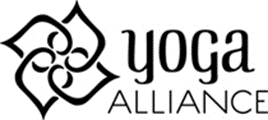After differing decisions from the EU IP Office's Opposition Division and Board of Appeal, the EU's General Court has issued a decision re-establishing a principle that has arguably become diluted in recent years: that descriptive words are weak elements of composite marks and cannot alone form the basis of a finding of a likelihood of confusion.
| The mark applied for |
The earlier mark |

|

|
Want to know more?
The thrust of the General Court's decision focuses on YAplus DBA Yoga Alliance's arguments that the Board of Appeal erred in its assessment of (i) the level of attention of the relevant public, (ii) the degree of similarity of the signs at issue, and (iii) the factors relevant to the analysis of the overall likelihood of confusion.
Level of attention of the average consumer
The General Court found that the Board was right to hold that the average consumer of 'training services' in class 41 would pay an above average level of attention to the marks at issue, given that training services are not every day services and involve a long-term commitment on the part of the consumer. These types of commitments are typically preceded by a process of considerable reflection on the part of the consumer, who will likely weigh up the size of the investment to be made.
The degree of attention paid to 'educational services' in class 41, on the other hand, may vary between average and above average, depending on the cost of the service provided. The General Court noted that some types of yoga classes, for instance, are offered at low cost, and so consumers of those services would not pay more than an average degree of attention. The General Court therefore overturned the Board's original finding in this regard.
Degree of similarity of the signs
The Opposition Division has originally found that the marks were visually similar to an average degree, phonetically highly similar and conceptually similar to a low degree. The Board of Appeal disagreed, finding a low degree of visual similarity, an average degree of phonetic similarity and ‘partial’ conceptual similarity between the marks.
The General Court upheld the Board's conclusion that the relevant public, even being non-English-speaking Czech-, Greek-, Croatian-, Hungarian- and Polish-speaking consumers, would likely understand the descriptive meanings of the words YOGA and ALLIANCE, given their common usage by international brands eg in the fields of wellness and air transport, respectively.
The General Court carried this assessment of descriptive meaning through to the assessment of the dominant and distinctive elements of the marks at issue. It held that the Board of Appeal was entitled to decide that the applicant's trade mark contained no dominant elements (given that the device and words were, in and of themselves descriptive or banal), while the flower device was the co-dominant element of the opponent's earlier mark, alongside the word YOGA.
Considering the limited distinctiveness of the shared words YOGA ALLIANCE in both marks, the General Court had no qualms in deciding that the visual similarity between the marks at issue was low, and that the aural and conceptual similarity between the marks was average (due to the shared YOGA ALLIANCE element).
Likelihood of confusion
The General Court placed considerable weight on the need to keep descriptive words free for use by third parties. Excessive protection of trade marks which have a very weak distinctive character is to be avoided.
It held that lower tribunals must remember that the degree of visual, aural and conceptual similarity between trade marks at issue need not always be given the same weight. In this case, for instance, the average conceptual similarity between the marks should only be given limited weight in the assessment of the overall likelihood of confusion because that similarity stems from descriptive content. This is all the more true for the part of the relevant public paying an above average level of attention for the goods and services at issue.
Accordingly, irrespective of the varying degree of knowledge of the English language in some EU Member States, no likelihood of confusion was found in this case due to the descriptiveness of the words YOGA ALLIANCE and the differing graphical elements between the marks at issue.






